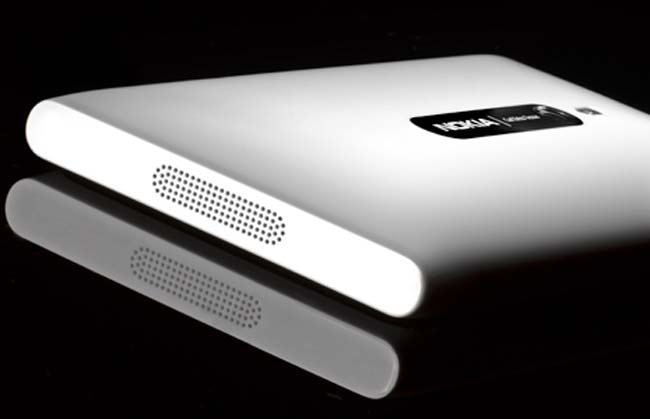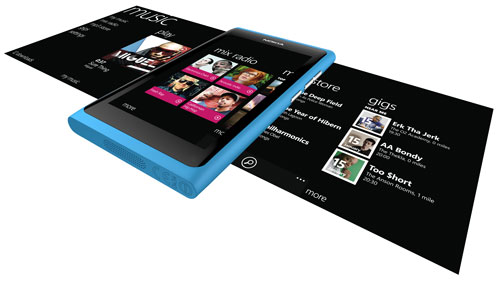Five years ago, launching a decent streaming platform took millions. Now? A teenager with a laptop can build something that reaches millions. That shift…
A second glance: Nokia’s Lumia 800

Nokia has had a rough couple of years in the eye of the public but in the emerging markets it’s still the king of the castle. Its dominance in markets such as Africa has remained mostly unchallenged in recent times. Nokia was the phone that taught me about mobile. I had the Nokia 6310 back in the day and that was definitely the most stable and effective communication device I’ve ever used, ever. I have an historical affiliation to its brand and its phones but I have to admit, it’s lost me recently. I’ve tried Android, Blackberry, Samsung and many other devices over the past few years but now, Nokia is back.
Nokia’s operating system, Symbian, still controls an overwhelming majority of mobile usage in Africa, Asia and South America according to research that Statcounter released in early 2012.
For this reason I believe that the Lumia, in it’s current and possibly all future iterations, will help Nokia (and Microsoft) in the emerging markets to not only maintain some semblance of dominance but to grow their smartphone penetration in the emerging markets. Nokia has market share and one thing that you can’t take for granted is control coupled with the potential of an upgrade of a trusted brand. Nokia is the trusted brand in the emerging markets.
The trick for Nokia and Microsoft’s Windows Phone 7 (WP7) operating system is to make the touchscreen, operating system plus the environment as well as the ecosystem as easy to grasp and adapt to as possible for their current and growing user base. I think they’ve done this with the Lumia 800 and this is what I love about it.
Hardware and Software
I loved the look and feel of the device itself. The hardware is gorgeous and easy to hold. The consistently good UI and design flow is incredibly easy to use and if you couple that with the vibrant and full colours of the screen, it all ties together nicely.
This is the type of device I could give to a 60 year old grandfather and get him using it in a few minutes flat. Or to someone who’s only ever used the Nokia Express Music (one of the biggest selling devices in Africa) and not worry that they won’t understand how to use it.
The two screen experience that WP7 dictates makes the device easy to understand for anyone whether you’ve used a touch device before or not. Two screens, two options, lots of blocks that you can customise. Nice and simple. Too simple. But I’ll get to that.
Competitive sidestep
One of the things that I was concerned about when I heard that Microsoft was creating a new touch device OS was that they would try and do what Android did and compete with Apple’s iOS. Android tried and came very close to competing but unfortunately they still only managed to pull off a second-rate iOS. If WP7 had tried to do the same they would have come in at a dismal third and this would have taken them out of the market completely.
The WP7 OS doesn’t try to compete with iOS which, in my mind, puts it ahead of Android and makes it more user friendly for the first-time touchscreen user. By sidestepping the “iPhone” question, Nokia and Microsoft have set themselves apart from their competition. For this reason alone I think that Nokia and Microsoft (should I start calling them “NokiaSoft”?) have played themselves back into the minds of the consumer, especially the consumer in the emerging markets that have never touched an iPhone, and will never be able to afford one.
Quick hits
The lock/unlock home screen is very quirky and unique with a “bouncing” action that is clever and colorful. Back in the day I loved, no, absolutely adored the game Snake. But for ten years it has been gone. I loved that game so much that I literally finished it. I got to a point that there was no space for the snake to grow, one more dot to eat and only my snakes tail to consume. I clocked Snake. Now, Snake is back and available in the Xbox Live game store. Snake is amazing and I love Nokia for bringing it back.
Right now in the smartphone and touchscreen battle Nokia and Microsoft are the underdogs and I like underdogs. I want them to succeed. After using the Google/Samsung Nexus S with Android’s latest OS, Ice Cream Sandwich, I was ecstatic to move on to WP7 and have a phone that is fast and responsive. The Lumia destroys my Nexus S in that department. The IMDB application on this device is absolutely gorgeous. Get it. Use it. Now on to some things that I don’t love about the Lumia 800:
Hardware and Software
The little mechanism that you have to slide, pop and unlock to enter your simcard and charge the phone is definitely on the road to ruin. If that little mechanism doesn’t break in a few weeks of use, I’ll eat my hat. Why would you insist on forcing me to push a mechanism to pop open a cover to insert my charger every time I want to charge or connect the device? Madness.
I mentioned above that the user experience is simple and clean but if I’m honest I was bored after two days of use. I downloaded the Facebook, Twitter and Evernote apps and they all looked the same with the exception of each individual and distinct logo color thread through each app.
For a user new to the touchscreen and smartphone environment this device is wondrous and consistent. For the more experienced and demanding users I believe the phone is oversimplified and too controlled inside of the app experience. Oddly all the buttons on the Lumia 800 are on the right, some people might absolutely love this feature but I think it’s a bug. To hit the bottom button requires using both hands — one to hold the phone, the other to press the button.
The two screens that I mention above that WP7 forces on you are all the screens that exist. This means that if you like to install a lot of apps, you’re going to always be presented with an alphabetical list of apps or a big grid of tiles that you can customise. This might sound fine but what happens when you want get to the phone settings? You have to swipe over to the right screen (the alphabetical one) and then scroll down to “S” for “Settings”. There is no other way to get to phone settings. I don’t like lists and forcing me to use a long list of apps is an issue.
Apps
I’ve just mentioned that I feel that the apps are too controlled in what they are allowed to do but this is the least of the problems in the Microsoft app environment. Choosing to switch over to Android a while ago I took a decision to not live and die by the available apps on my OS. I waited patiently for Android to catch up and give me all the options that the Apple App store can. It’s close but it’s still not there. And now Microsoft are asking me to go through this all over again with a very small variety of applications to download.
Settings and Alerts
I couldn’t figure out how to customise the alerts per app – i.e. email, vibrate, off. This means that every time I received an email my phone would vibrate. Ditto for Whatsapp messages and SMS alerts. Still speaking of customising alerts, I had no idea how to turn on alerts for Facebook and Twitter so I was forced to open up the apps and check obsessively for new messages or alerts of any kind.
Conclusion
The Lumia and WP7 combination is going to be the saviour for Nokia and Microsoft in the mobile game. The relationship between Nokia and Microsoft brings the two companies back into the smartphone game. Why do I say this? It’s quite simple in my mind: Nokia owns the emerging markets. This device plus OS will be the device and user experience to usher feature phone users onto smartphones with touchscreens.
I’m buying an iPhone
I’m a savvy mobile user who has used every smart device out there. I don’t want an oversimplified experience that centers around beauty. I’ve been with Android for a while now and the OS they provide gives so much customisation that going to WP7 is definitely a step in the wrong direction for a user like me.
The only logical progression for me after Android is the iPhone. I need a beautiful, functional and rich experience that is filled with apps and a great ecosystem. For me, right now, that is the Apple iPhone.

